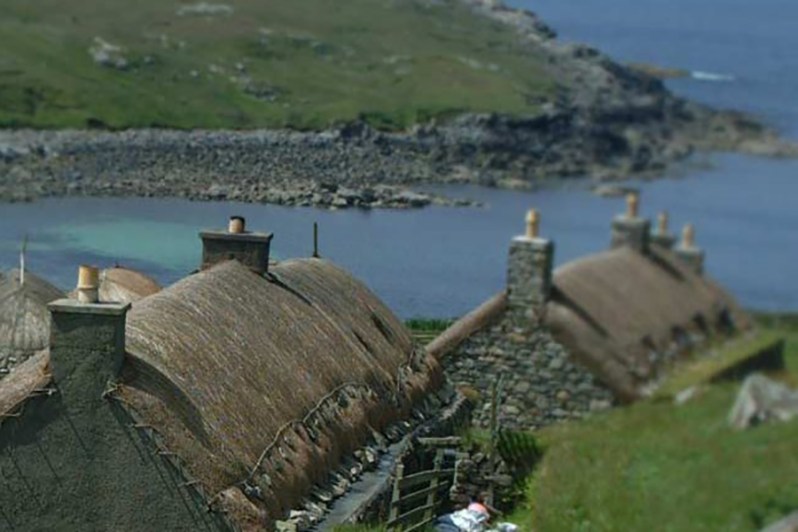For many Americans, the Outer Hebrides is a pitch-perfect representation of Scotland. It’s an idyllic island landscape where sheep outnumber people, and the rolling green pastures extend to the shores of the Atlantic Ocean. Sure, there are some paved roads and even Wi-Fi today, but life here is otherwise as it’s been for centuries. Gearrannan Blackhouse Village is a living museum that exists at the intersection of the area’s rich history and its tiptoe into modernity. Now, travelers looking to dive deeper into that history can spend a night or two at the village living (almost) like a true 19th-century Scot.

Gearrannan Blackhouse Village started in the late 1800s as a handful of family homes in coastal Carloway in the Outer Hebrides. Life in the crofting village wasn’t easy. The one-room abodes valued practicality over comfort. Tamped-earth floors, drystone walls, and thatched roofs provided only a modicum of relief from the harsh North Atlantic weather. A hearth at the center of each home was the only heat source. A simple divider kept farm animals on one side of the structure while the family slept on the other. Since the 1970s, village residents slowly abandoned their long-time family homes in favor of more modern digs.
For more than 30 years, the community trust Urras nan Gearrannan (the Garenin Trust) has worked to meticulously restore the aging buildings and surrounding croft land. It relies strictly on old-school methods of drystone masonry and thatched roofing to ensure every structure looks original. Even much of the Gaelic signage remains, providing a real sense of place. The trust updated all of the village blackhouses to serve as more modern and comfortable guest accommodations. Each blackhouse is named after the family that first lived there, and all boast their own character and charm. Though the interiors are rustic by today’s standards, all feature electricity and running water. The swankiest homes even offer upscale amenities like underfloor heating, full kitchenettes, and sea views.
Daily life in the village is still blissfully slow. There’s a small gift shop selling handmade wares and a single cafe serving hearty homemade food. The nearby Calloway Mill, which processes the world-famous Harris Tweed used to make everything from wallets and hats to scarves and suit jackets, is also open for tours. A short walk from the village, visitors will find beautiful Atlantic beaches, excellent hiking and cycling routes, and angling opportunities at nearby lochs and rivers.
Overnight accommodations are bookable through the official Gearrannan Blackhouse Village website. Hostel beds start at just £20 (around USD $26) per person per night. For £65 (USD $86) per night, visitors can score an entire blackhouse to themselves.
If you decide a few nights in Scotland isn’t enough — and it won’t be — the remote island of Stronsay is still looking for a few good ex-pats.



